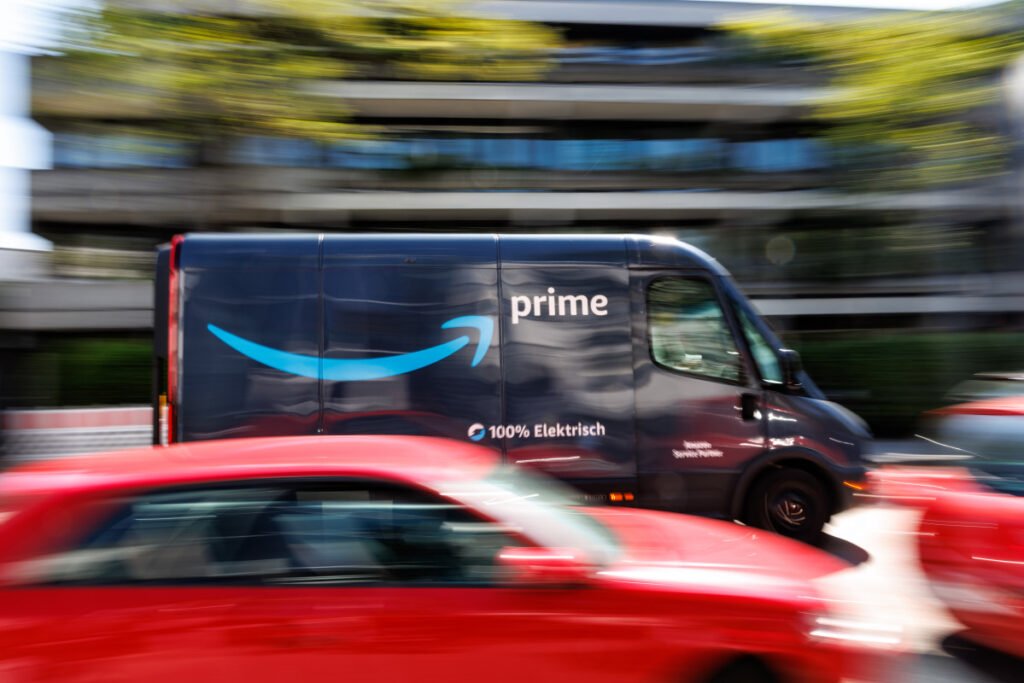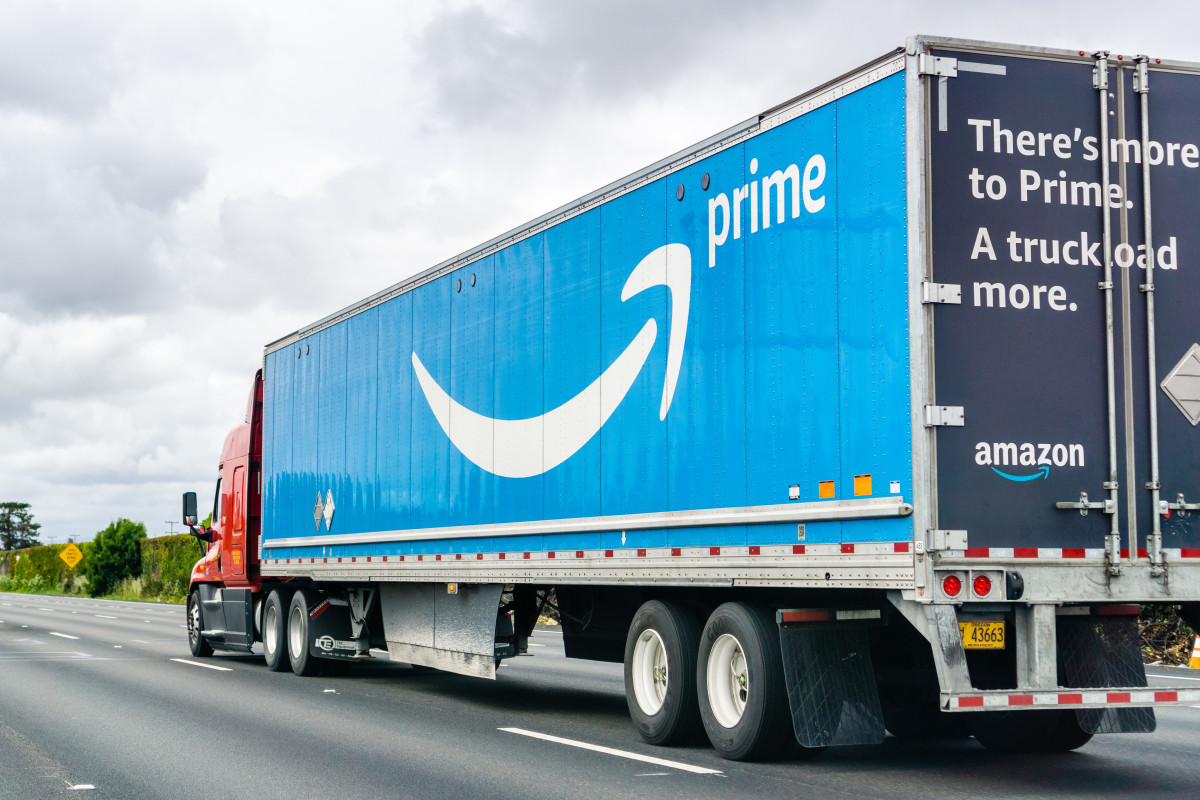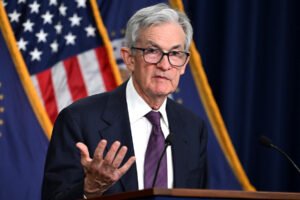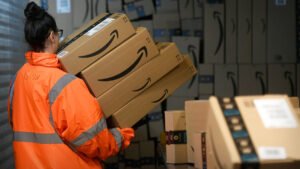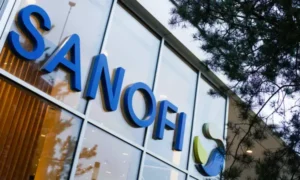In April President Trump revived a nice old-timey word during what he called his Liberation Day tariff speech in the White House Rose Garden.
“It’s such an old-fashioned term but a beautiful term: groceries,” he mused. “It sort of says a bag with different things in it.”
💵💰Don’t miss the move: Subscribe to TheStreet’s free daily newsletter 💰💵
Yes, it indeed does sort of say a bag with different things in it. And those things translate into a multitrillion-dollar market as people buy fresh produce, dairy, meat, snacks, bread, beverages and household essentials
Supermarkets remain a dominant force in the grocery sector with 69% of consumers regularly shopping there, according to Statista.
Online grocery shopping is on the rise with more than 138 million consumers using daily services last year.
Amazon (AMZN) is looking to bag a chunk of this massive market, and on Aug. 13 the e-commerce, entertainment and tech giant cranked up the volume.
Amazon claims quick and easy experience
The Seattle company said customers in more than 1,000 cities and towns could now order fresh groceries with same-day-delivery orders. It plans to expand to more than 2,300 cities across the U.S. by year-end.
“By introducing fresh groceries into our same-day-delivery service, we’re creating a quick and easy experience for customers,” Doug Herrington, CEO of Worldwide Amazon Stores, said in a statement.
More Retail Stocks:
- Troubled retailer files Chapter 11 bankruptcy, liquidates stores
- Wayfair struggles to reverse concerning customer behavior
- Walmart introduces mobile new store format for younger customers
“They can order milk alongside electronics; oranges, apples, and potatoes with a mystery novel; and frozen pizza at the same time as tools for their next home improvement project — and check out with one cart and have everything delivered to their doorstep within hours.”
Members of the Amazon Prime subscription service will get free same-day delivery on orders $25 or more or pay $2.99 if an order falls below the minimum. Non-Prime customers pay a flat $12.99 fee regardless of order size.
“Amazon indicated that the company generated over $100 billion of grocery and household essential sales in 2024 (excluding Whole Foods), so the company already has grocery traction on Amazon.com with consumers,” Bank of America Securities said in a research note.
The investment firm, which has a buy rating and $272 price target on Amazon shares, said fresh grocery has been a significant missing piece in Amazon’s offering compared with competitors like Walmart (WMT) and Target (TGT) .
Walmart is currently the top grocery retailer measured by dollar share, according to data from Numerator. As of Q1 2025, 21.2% of the grocery-market share belonged to the company.
“With better grocery capabilities, Amazon should see important customer frequency benefits and potential lock-in with weekly grocery shopping not achievable in other verticals,” BofA said.
“We expect Amazon to refine and improve its grocery selection over time.”
The investment firm sees the launch as a longer-term competitive risk for delivery company Instacart, although it said Instacart’s most profitable $75+ weekly baskets would see little near-term impact,
B of A has a neutral rating on Maplebear’s (CART) Instacart.
Analyst: Key Amazon questions remain
After Amazon unveiled its enhanced fresh food offering, Wells Fargo said it was hard to see the news as anything but an incremental negative for food and staples retail. There are hurdles to winning in ultracompetitive grocery, it said.
Related: Analysts unveil bold Amazon stock price target before earnings
The investment firm, which has an equal-weight rating on the shares, said the move was not thesis-changing for retail of staple goods, but it requires monitoring, according to The Fly.
While the move looks like a concern for peers given the sheer size of the Prime member base, winning in grocery is not a layup for Amazon, Wells said. Key questions on the breadth of the offer versus local grocery players remain.
It’s mportant to note, Wells Fargo said, that many customers already have grocery-delivery options.
Evercore ISI noted that Amazon’s expansion of same-day delivery to include perishable groceries marked a significant strategic move into one of retail’s most competitive and high-retention categories.
The firm said the move deepened Amazon’s customer engagement by strengthening a high-frequency purchase category into the Prime ecosystem, increasing loyalty and longtime customer value.
The deeper integration of groceries with Amazon’s vast general merchandise offering positions the company more aggressively against competitors like Instacart and Walmart+.
By setting a relatively low free delivery threshold of $25, Evercore said Amazon applies pricing pressure that may challenge rivals’ ability to compete on convenience and cost.
Given that this segment is a $1 trillion-plus market in the U.S. and perhaps $2 trillion-plus across all of Amazon’s global markets, there should be a large growth opportunity here, the firm added.
Evercore has an outperform rating on Amazon with a price target of $280 on the shares.
Related: The stock market is being led by a new group of winners





